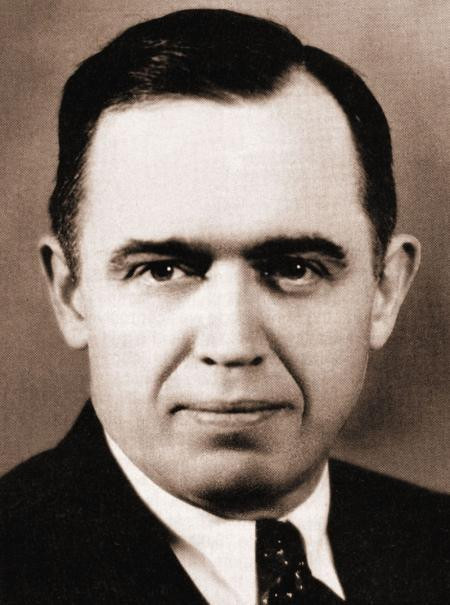
Delmar G. (Barney) Roos - October 11, 1888 February 13, 1960
Chief Engineer, Studebaker, 1926 to 1936
Fred Zeder began work with EMF as a consulting engineer in 1910, and became Studebaker’s Chief Engineer early 1914. Zeder recruited Ray Skelton from Packard (1914) and close friend Carl Breer (1916). These three became known as the “Three Musketeers”. They were brilliant young engineers and Studebaker fared well under their engineering excellence. However, President Erksine did not see their value, and they moved on in 1919 and would eventually form the core engineering staff for the new Chrysler Corporation. Studebaker Engineering would suffer along in mediocrity for the next seven years until Mr. Roos is hired.
Barney Roos was the Chief Engineer at Studebaker from 1926 until 1936. He is credited with the design and release of all the straight-eight’s Studebaker ever built.
He was also responsible for the design of the Rockne-Commander-Dictator Six (1932), initially used in the Rockne Model 65. This Six was destined to power Studebaker cars until 1951 and then continue on to power the truck lines until 1961, making this engine one of the longest lasting engine designs ever. He was instrumental in the development of Studebaker’s “Planar” suspension introduced in 1935. Under his tutelage, Studebaker once again became known for engineering excellence.
Delmar (Barney) Roos, was born in New York City October 11, 1888 and died February 13, 1960. He was neck-named Barney during his collage days after his idol Barney Oldfield, while earning degrees in both mechanical and electrical engineering at Cornell University.
His early job was that of press photographer and he later worked in the General Electric Company’s, electrical laboratory for Dr. Sanford Moss. He began his automotive work in 1912 with Locomobile, then moved to Pierce-Arrow in 1919, and then back to Locomobile in 1922, where he was instrumental in the design of a new straight-eight that would replace the aging T-head straight-six. Not getting along with Billy Durant, who had acquired Locomobile (Durant’s third attempt to create another automotive conglomerate), Roos moved on to Marmon. While in Indy, he replaced the Marmon Six with a small design straight-eight, similar to the Locomobile design. But, even before this engine reached market, he was off again to Studebaker.
He was chief engineer at Studebaker from 1926 to 1936 where he earned the reputation of standing up for both himself and his staff against against the likes of Erskine himself.
In 1936, after a personal crisis, Paul Hoffman sent Roos to England with the Rootes Group, which distributed Studebaker products in the U.K. It was during this time he developed an interest in smaller cars, which explains why Canaday would offer him the chief engineering job at Willys-Overland.
It was at Willys that he was pivotal in the design of the original Jeep and the F-head Go-Devel engine. Roos left Willys after Kaiser acquired Willys in 1953, but continued to consult for them until his retirement in 1958. He passed away suddenly in 1960.
Most of the information used in creating this article came from a Hemmings Classic Car article written by Jim Donnelly and from Wikipedia.
